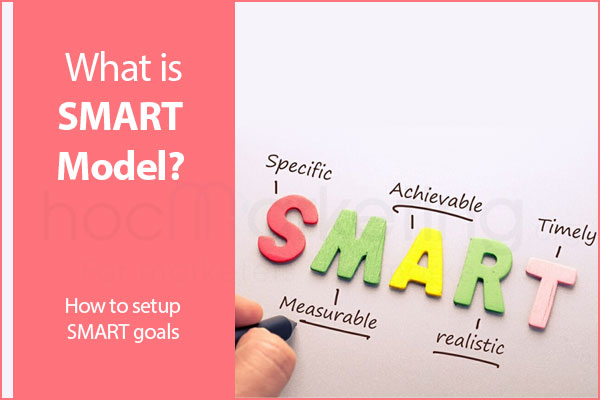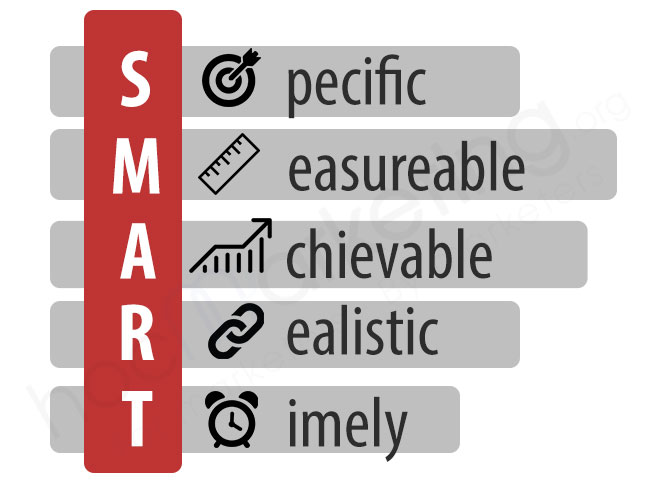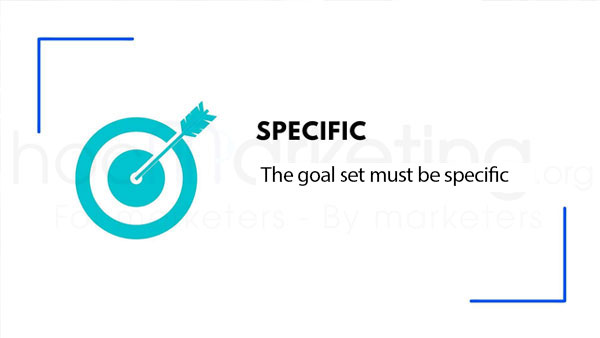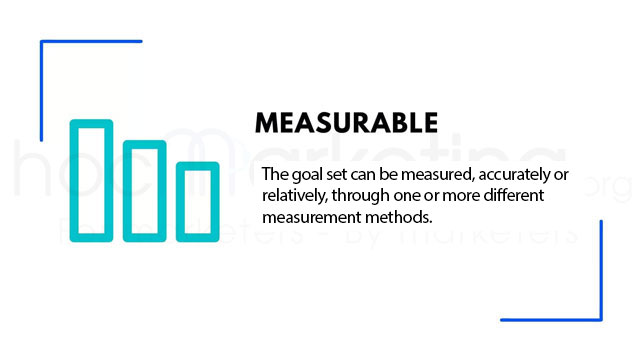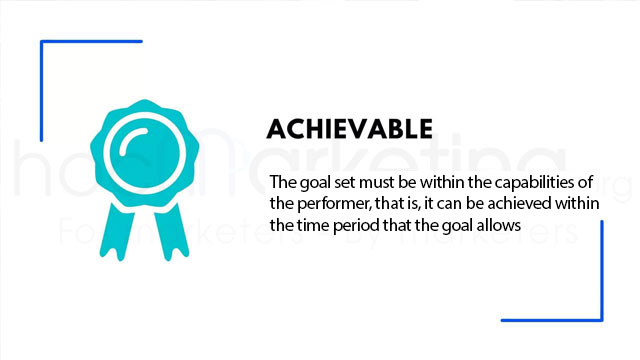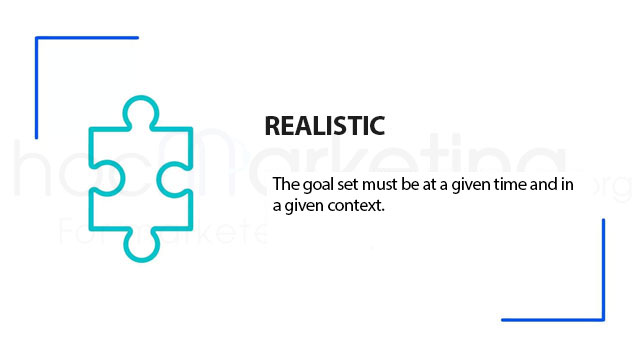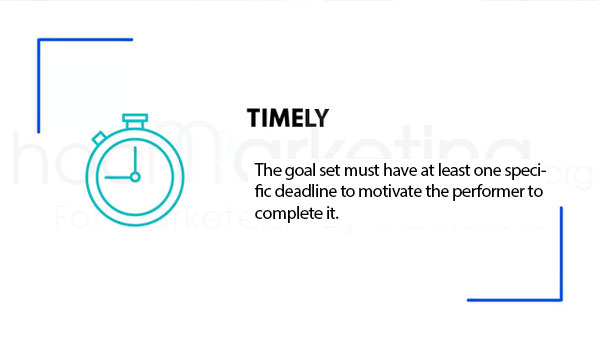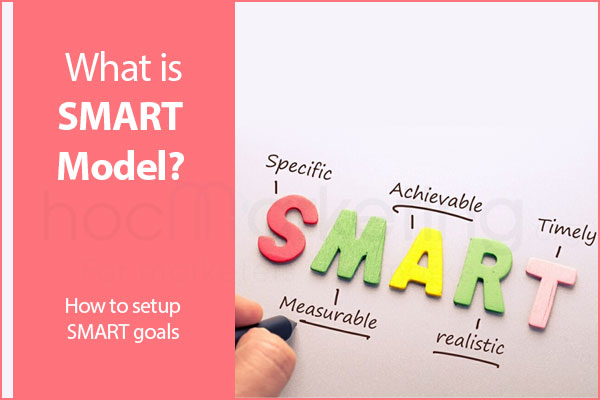
What is SMART Model? How to setup SMART goals?

What is the SMART model? Explain the concept of the SMART model. List and analyze the criteria in the SMART model. Guide to setting goals according to the SMART model.
What is SMART Model?
Smart in English is an adjective indicating the state of intelligence, wisdom, wisdom... Any phenomenon associated with SMART has a positive meaning. Specifically in this case, SMART goals can be seen as smart, prepared and highly strategic goals.
SMART model, also known as SMART criteria or SMART goals, is a model with specific conditions (criteria) to help managers build, set, and select appropriate goals and targets. suitable for business. The criteria according to the SMART model include:
S - Specific
The goal set must be specific, the more specific, the higher the probability of achieving that goal. On the contrary, if the business only sets general goals, it will be difficult to know where the exact destination of that goal is, as well as the participants in the implementation will also be very easy to go in the wrong direction compared to the target. with the goals that the manager wants to set.
One of the best ways to make goals highly specific is 5W, which means your target content should contain information that answers five questions:
- What: What do I (we) want to do?
- Why: Why do I (we) need to do this? Why is this goal important to us?
- Who: Who will be involved in achieving this goal?
- Where: Where is the location of this goal?
- Which: What resources, resources, or tools can I (we) use to achieve the goal?
M - Measurable
Content of goals, indicators can be measured, accurately or relatively, through one or more different measurement methods. The measure of the goal will help the person doing the goal to determine exactly whether the goal has been completed, how many percent (%).
A - Achievable (Attainable)
The goal set must be within the capabilities of the performer, that is, it can be achieved within the time period that the goal allows. Setting a far-fetched goal, beyond the ability to achieve, will be a double-edged sword. Once the performer feels that they can never achieve the goal no matter how hard they try, they immediately feel discouraged, want to give up and always doubt the feasibility of the goals. next to which they are assigned.
R - Realistic (Relevant)
There are goals that are set, even though they are considered feasible, measurable, or very specific, but if they are not highly realistic, they will also waste resources of individuals, teams, organizations or businesses. . Realism here manifests itself in the desired results at a given time and in a given context. For example, a business with an incomplete product/service cannot aim to launch advertising programs to reach customers at that moment. Or in another example, a business cannot set a goal of recruiting 100 more employees this month when that business does not have a premises, an office as a workplace.
T - Timely (Time-related)
Certainly, a goal when set must have at least one specific deadline. That deal will act as both a time pole for other goals and activities, as well as to motivate the performer to complete it. If there is no deadline, the possibility that the goal will not be achieved is completely obvious. Determining a reasonable deadline is also an important factor. A deadline that is too far away from the necessary will make the implementer become sluggish and slow, but a deadline that is too close to the ability can reduce the effectiveness of the goal implementation process.
Short history of SMART Model
The criteria in the SMART model were formerly known as Peter Drucker's Management by Objectives approach. Then, in November 1981, the term SMART was first used by George T. Doran. Since then, Saint Louis University professor Robert S. Rubin has written about the SMART model in articles on the Society for Industrial & Organizational Psychology. In those articles, he made it clear that the SMART model has different meanings in different situations and different audiences.
To better understand what Professor Robert S. Rubin means, let's refer to the following cases:
Building SMART Goals
Case 1 - Objectives related to new product development.
- Specific: What will the finished product look like, and what new features will it have? What is the target audience that the product wants to target? Who will be involved in the development? Where do research and development take place?
- Measurable: What stages (stages) can the development process be divided into? How is it determined that each stage of execution is complete?
- Achievable: Are the resources of the enterprise sufficient to carry out the research, production and testing of the new product? Does current technology meet to create new products with the features and designs outlined?
- Realistic: Is new product development necessary at this stage? New products, after completing the development process, are capable of competing with competitors' products, as well as generating large enough revenue for the business? Will consumers accept the new product as outlined in the target?
- Timely: When is the deadline for finalizing the design, finalizing the concept, completing production, testing the product and most importantly ready for commercialization? Whether these deadlines are too far or too close compared to the current capacity and marketing situation of the business.
Case 2 - The goal of achieving a certain number of subscribers on the business's Youtube channel
- Specific: How many subscribers do you want to achieve exactly? How much increase compared to current? Who are the subscribers that businesses want to target, and what characteristics do they possess?
- Measurable: What is a tool to measure subscriber count?
- Achievable: Are the resources of the business enough to create the content to attract the required number of subscribers?
- Realistic: What is the effect of developing a Youtube channel for businesses in this time and context? Are your target customers the people who often use the YouTube platform?
- Timely: When is the deadline to reach the set number of subscribers? Is this deadline too close or too far for the resources and content capacity of the business?
Case 3 - Successfully organized a seminar to attract new customers and promote the image of the business
- Specific: What is the expected number of participants? What is the ratio of men, women, age groups, occupations... ? How many people can the event venue accommodate?
- Measurable: How many stages is the organization of an event divided into? How to determine if each stage has been completed?
- Achievable: Is the enterprise's budget enough to hold a conference with the proposed format and content? Is the event team qualified to build a good script and coordinate the event as it happens?
- Realistic: Is organizing a conference effective in this moment, in this situation, when the Covid epidemic is raging? Is there a better alternative that can give the same effect?
- Timely: When is the event time?
Advantages of the SMART model
SMART plays the role of a reliable basis for businesses to determine the right goals for business plans and strategies, thereby, saving costs and time.
For individuals, SMART is an easy-to-use tool for everyone, providing the clarity, focus and motivation you need to achieve your goals, SMART encourages you to define goals and set dates complete. SMART goals can be set anywhere, in any situation, without the need for specialized tools or training.
SMART helps us to maximize the strengths and weaknesses of the business and ourselves in the process of setting goals.
Disadvantages of the SMART model
SMART cannot help you achieve good results if you follow the principles in the process of achieving your goals.
In case you do not reach your goal, you will feel frustrated, lose faith in SMART.
Sometimes SMART can inhibit your creativity in business development plans and strategies, yourself.
